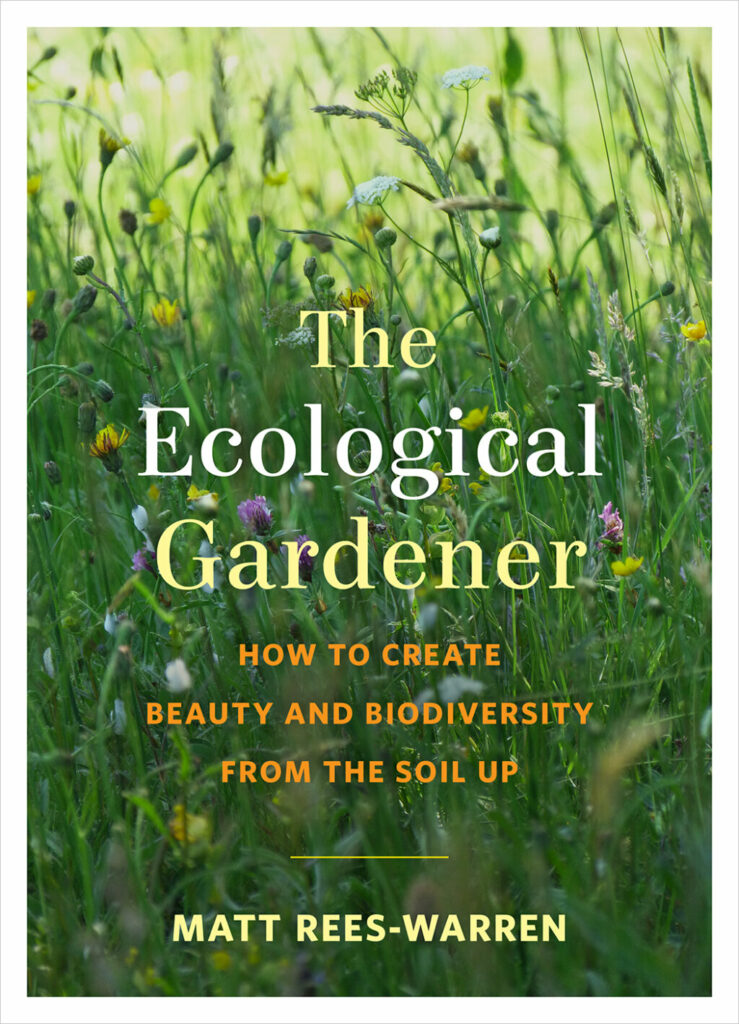
How to Create Beauty and Biodiversity from the Soil Up”
By Matt Rees-Warren
Chelsea Green Publishing, 2021
224 pages, paperback, $24.95
“The Ecological Gardener” is a great book for anyone who wants to think beyond the vegetable patch, beyond the flower beds and the mowed lawn. Matt Rees-Warren encourages gardeners to embrace the larger landscape and reimagine how our gardening might help mitigate climate change. Is it possible to do that? To reduce carbon one compost bin at a time? Yes, says Rees-Warren.
Not only that, he believes that gardens can restore soil health, help regenerate native plant diversity, and ultimately become refuges for wildlife. And he lays it all out in five easy pieces. Chapters focus on garden design, soil, plants, water and wildlife. In addition, Rees-Warren provides directions for how to test your soil for clay, build a compost bin, turn your lawn into a meadow, and more. He even offers tips on how to use a scythe and sharpen the blade.
When thinking about a garden, he says, consider the landscape as a whole — the lawn, trees, flowers, vegetable patch — and how all the plants will interact with the elements of the landscape and buildings. How will rainfall and sunlight influence the different layers, from canopy to groundcover? Will you mow paths to connect garden spaces? And is it possible to balance the desire to recreate natural habitats with that of planting a garden for beauty?
Soil structure is important, and Rees-Warren emphasizes the contributions of microorganisms and fungi to a living soil. Readers learn different ways of composting as well as how to make their own biochar. Rees-Warren discusses microhabitats, such as dry areas and shady spots, and shares techniques for collecting seeds, dividing plants, preparing cuttings and propagating plants in other ways. He encourages gardeners to think about how they will get water to plants, especially during dry seasons. Solutions include rainfall harvesting, recycling gray water, and slowing down stormwater to mitigate flooding and erosion through the use of swales, ponds and rain gardens.
Wildlife, says Rees-Warren, is intrinsic to building a natural ecosystem. Shrews, worms and insects might inhabit your garden spot right now. But as your garden becomes more of a natural ecosystem, it could provide birds and other wildlife with a corridor that would allow them safe passage as they navigate the larger landscape. And if you’re a birder, or passionate about pollinators, you can plant things that provide flowers, fruits and seeds for those animals.
In addition to plants, part of growing an ecological garden is rethinking the things we use. The last chapter shows how gardeners can transition from plastic pots and concrete to more sustainable materials.
While this is a great resource for rewilding your gardening landscape, there is one caveat: Rees-Warren wrote this book with a U.K. audience in mind. So when you’re looking for native plants, ignore the lists he provides. Instead, contact a local native plant nursery or your cooperative extension service.
Sue Smith-Heavenrich, Candor, New York
